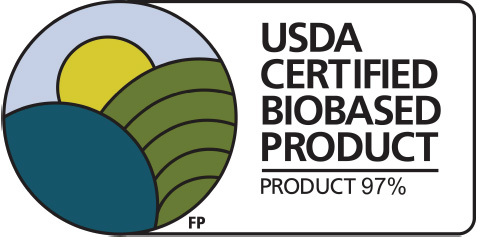Sodium Hypochlorite (Bleach): Involved in more household poisonings than any other chemical. When it reacts with organic material in the environment, carcinogenic and toxic compounds are created. These com-pounds can cause reproductive and immune system disorders.
Petroleum Distillates (AKA: Napthas): Linked to cancer, lung damage, lung inflammation and damage to mucus membranes. Distillation is the basic process used to separate and purify components of crude oil. These are found in gasoline, kerosene and mineral seed oil. Pesticides commonly contain petroleum distillates.
EDTA: A skin irritant leading to allergies, asthma and skin rashes. Used as an alternative to phosphates to reduce mineral hard-ness in water. EDTA acts as a foam stabilizer. Does not biodegrade and can redissolve toxic heavy metals in the environment, allowing them to re-enter the food chain.
Artificial Fragrances: Toxic to fish and mammals. Causes allergies, skin and eye irritation. Does not easily biodegrade in the environment. One of the top five allergens in the world, and has many effects on the brain and nervous system.

Get SoapBerries and avoid these problems!
Phosphates: Used to remove hard-water minerals to make detergents more effective and prevent dirt from settling back into clothes during wash. When released into the environment, they can stimulate the growth of certain marine plants. Used as builders in Laundry Detergents.
Linear Alkyl Sodium Sulfates (LAS): These synthetic surfactants are the most common in use. Biodegrades slowly, making them a hazard to the environment. During the production process, carcinogenic (cancer causing) and reproductive toxins, such as benzene, are released into the environment. Contact irritants of the skin as well as lung and eye irritants, especially detergent that is in powdered form.
Optical Brighteners: Synthetic Chemicals that convert UV light wave lengths into invisible light (makes laundered clothes appear whiter). Does not affect the cleanliness of the clothes. Toxic to fish and causes bacterial mutations. Can cause an allergic reaction when exposed to skin that is later exposed to sunlight.
Phenols: (TOXIC) A suspected carcinogen (a substance capable of causing cancer) rapidly absorbed. Effects include swelling, pimples and hives. Internal consumption can cause circulatory collapse, cold sweats, coma and death.
Alkyl Phenol Ethoxylates (APE’s): Common surfactants, can damage immune system. Suspected hormone disruptions (can mimic hormones in the body that regulate reproduction). Supermarket or drugstore brands are more likely to contain APE’s than name brands.
COLOR detergents: Colorants such as Rhodamine B are toxic and can even cause cancer and other harmful effects in people, the EPA has warned. Particularly harmful can be metalized dye.